Collected From Our Newsletters
-
January
-
January 2, 1917
Fire destroyed much of the business district of Valdez, Alaska.
It was said to have started in several buildings simultaneously, suggesting arson.
-
January 10, 1882
The town of Juneau was named after Joe Juneau,
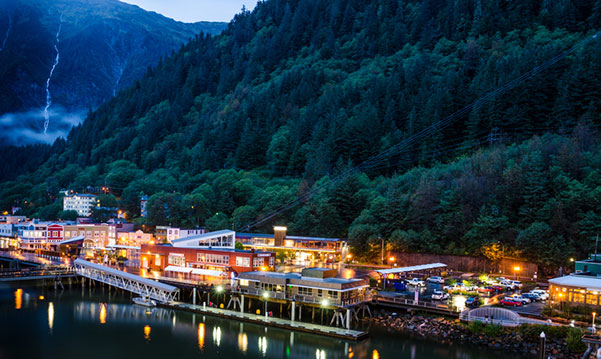
a prospector from Quebec. The town had previously been known as Harrisburg in honor of the town's co-founder. It's said that Joe bribed the voters and that's how his name ended up receiving 65% of the 72 votes cast. Some might even say it's fitting that Juneau later became the state capitol.
-
FEBRUARY
-
February 2, 1925
The dog team of Gunnar Kaasen arrived in Nome with diphtheria serum,

completing the heroic run that has since been honored annually by the running of the Iditarod Race along part of the same route.
-
February 11, 1942
President Roosevelt gives final approval
to begin construction of the Alaska-Canada Military Highway which has since come to be called simply The Alcan.
-
February 11, 1945
Charles D. Brower died in Barrow Alaska.
He wrote an autobiography, Fifty Years Below Zero: A Lifetime of Adventure in the Far North about living with and learning Alaska survival skills from the Inuit people. He became known as the King of the Arctic.
-
February 14, 1779
Captain James Cook,
while returning from an expedition to Alaska and mapping most of the west coast of North America, was killed in Hawaii.
-
February 26, 1917
Denali National Park

(then called Mount McKinley National Park) was established. Oddly, the original boundaries of the park did not include most of the mountain but this was later rectified.
-
MARCH
-
March 24, 1989
The oil tanker Exxon Valdez ran aground
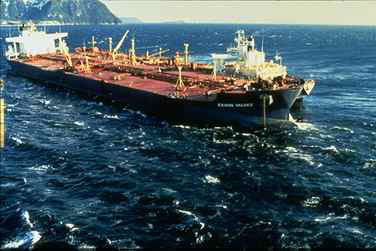
in the Valdez Narrows of Prince William Sound, spilling almost 11 million gallons of oil into the waters. This tragic event was the largest oil spill in North America.
-
March 30, 1867
US Secretary of State William Seward purchased Alaska from Russia
for $7,200,000. This is the equivalent of $111,500,000 in 2015 dollars. Seward was ridiculed for wasting money on a big ice cube, but when gold was discovered 30 years later, everyone quickly changed their minds.
-
APRIL
-
April 1, 1946
A massive underwater earthquake off the coast of Alaska
triggered a tsunami. Five men were on watch at the Scotch Cap Lighthouse on Unimak Island when the tsunami hit. All five were killed when the 45-foot lighthouse collapsed and washed away.
-
April 2, 1967
Walt Disney's "A Salute to Alaska"
episode of his Wonderful World of Color TV series aired to commemorate the 100th anniversary of the Alaska Purchase. Animated sequences showed the discovery in 1741 by Captain Bering. It was also notable for being the last episode that Mr. Disney himself introduced as he'd died 5 months earlier.
-
April 12, 1901
Nome Alaska, on the extreme west coast of Alaska,

was incorporated as a city and today is home to the finish line of the Iditarod. The race commemorates the emergency delivery of diphtheria serum during an outbreak in 1925. The weather in Nome would seem severe to anyone from the 'lower 48', but being on the coast it's substantially milder than the interior of Alaska!
-
April 23, 1868
The Alaska Times, the first newspaper known to be printed in Alaska,
begins a two and a half year run in Sitka before moving to Seattle, changing its name several times, and eventually merging with another paper in 1878. (Two years earlier another newspaper, the Esguimaux, came out of Libbysville on the Seward Peninsula but they produced just a few hand-written copies that were bound with bent pins.)
-
MAY
-
May 30, 1778
Captain James Cook, the well-known explorer,
came upon Turnagain Arm. Hoping it would lead to the Northwest Passage, he learned it was simply the mouth of a river. William Bligh, the sailing master, expressed their frustration at having to keep looking by naming it "Turn Again".
-
JUNE
-
June 3, 1942
The Japanese began an attack on Alaska.
A largely ineffective bombing campaign on Unalaska was followed by landing an invasion force on the lightly populated islands of Kiska and Attu. Because of the remoteness and extreme weather, it took over a year before the islands were in Allied hands again. Nearly 4000 US troops were killed retaking Attu. Oddly, 313 Americans were killed retaking Kiska even though the Japanese had secretly abandoned it a week earlier.
-
June 8, 1889
The legendary Alaskan pilot Noel Wien was born.
Noel migrated to Alaska in 1924 with pilot license #39 which was signed by Orville Wright himself. He was the first to make many long point-to-point flights, beyond the Arctic Circle, across the Bering Straight, and to Asia.
-
June 20, 1923
Warren Harding became the first US president to visit Alaska.
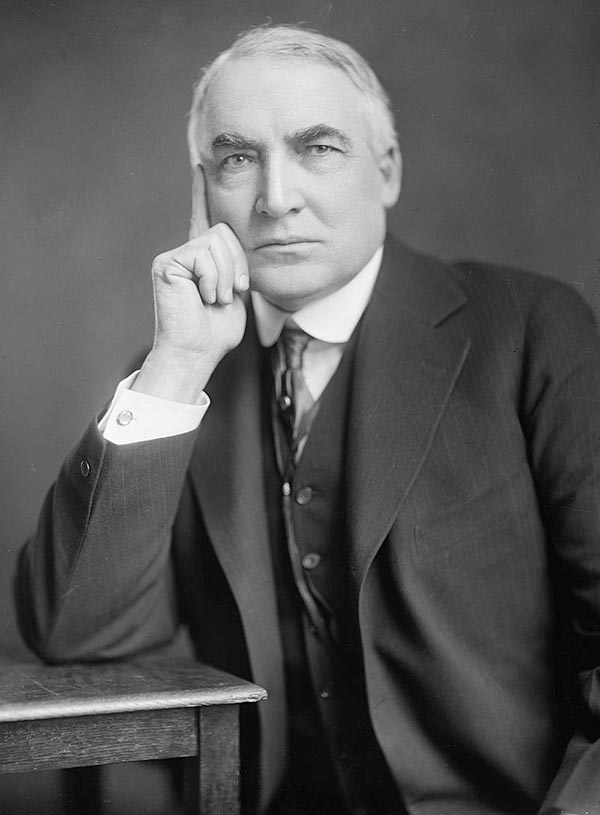
Called the "Voyage of Understanding," his tour included a series of speaking engagements in almost 2 dozen towns. For a portion of the journey he travelled in a Dodge sedan modified to travel by rail. That car is currently on display at the Fairbanks Pioneer Park.
-
JULY
-
July 1, 1935
The Alaska Agricultural College and School of Mines is renamed "University of Alaska."
Just 13 years earlier the school had opened in a single building with a faculty of six professors who offered 16 classes to a total of six students.
-
July 8, 1898
Jefferson Randolph "Soapy" Smith, a notorious con man,
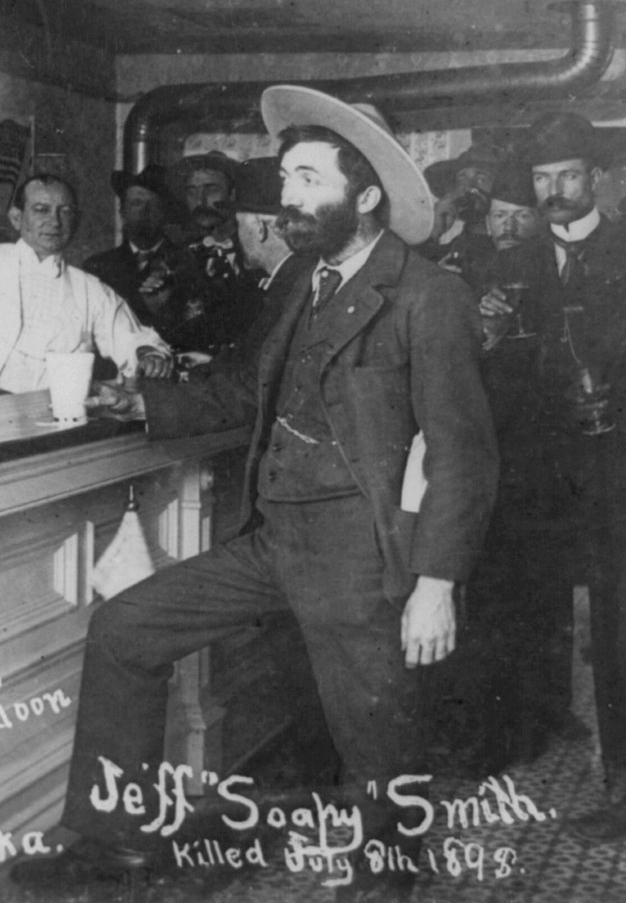
and leader of an underworld gang in Skagway Alaska was shot dead when he confronted a crowd of vigilantes who had gathered to bring law and order back to their town. The famous gun battle is called the "Shootout on Juneau Wharf" and the Soapy Smith Wake is still celebrated there every July 8. Soapy gained his nickname when he sold overpriced bars of soap by claiming some of them had $100 bills hidden underneath the wrappers.
-
July 15, 1741
is an amazing date we should all know by heart.
That's when the Dutch and Russian explorers Vitus Bering and Aleksei Chirikov were the first Europeans to spot Alaska. Some say they "discovered" Alaska but of course the Native Americans had already been living here for thousands of years. But this was still a momentous day and geography bears tribute to Vitus through the Bering Sea, Bering Straight, Bering Glacier, Bering Island, and the Bering Land Bridge. Chirikov isn't so well remembered.
-
July 28, 1919
The record high temperature in Fairbanks was set at 99° fahrenheit.

Fairbanks has the odd historical footnote of being founded as the result of a steamboat accident. Elbridge Truman Barnette was traveling to Tanacross in 1901 to set up a trading post when the boat he was in ran aground. He met some local prospectors who talked up the area until he changed his plans. The town was eventually named for an Indiana senator who later became vice president under Roosevelt.
-
AUGUST
-
August 1, 1977
With oil prices so high and oil being such an important part of the Alaskan economy,
this is a good time to commemorate the anniversary of the first tankerful of oil shipping out from North America's largest oil field in Prudhoe Bay on the North Slope along the Arctic Ocean.
-
August 10, 1728
The explorer Vitus Bering discovered St. Lawrence Island
(also known as Sivuqaq,) one of the last exposed portions of the ancient land bridge that long ago connected North America to Asia. It is believed that all the Native Americans from Nunuvut to Tierra del Fuego are descendents of the people who walked over from Siberia about 20,000 years ago. Today St. Lawrence Island is the sixth largest island in the United States and about 1300 people live there, half of them in the city of Gambell.
-
August 15, 1868
Jan Welzl (aka Eskimo Welzl),
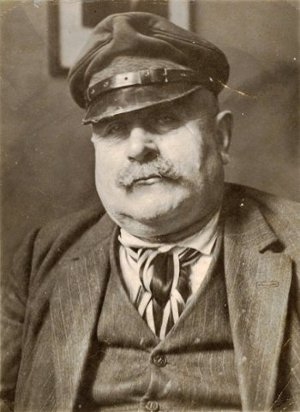
one of Alaska's quirkiest denizens, was born in the Moravian city of Zabreh in the Austrian-Hungarian empire. For most of his life he lived in the Arctic moving between the American, Russian, and Canadian islands. He was an adventurer, inventor, small businessman, gold digger, and even Eskimo chief and Chief Justice on the island of New Siberia. While living in Dawson City he invented a perpetual motion machine to keep mining shafts dry without the need to burn fuel but predictably it wasn't the success he hoped it would be.
-
SEPTEMBER
-
September 5, 1881
Alaska held its first election
where 294 voters sent Mottram Dulany Ball of Sitka to Congress as an unofficial delegate. He worked with Senator Benjamin Harrison (who later became president) to convert the "Department of Alaska" into the "District of Alaska" in 1884.
-
September 10, 1899
One of the largest earthquakes on record hit the Yakutat Bay area of southeastern Alaska.
It measured 8.6 on the Richter scale. Because hardly anyone lived in the area, damage and injuries were minimal, but prospectors later reported massive changes in the landscape of Disenchantment Bay.
-
OCTOBER
-
October 12, 1913
Benny Benson who designed our state flag was born.
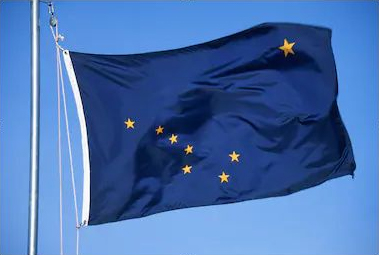
In 1927 a contest was held for teenagers to design a flag for the territory of Alaska. Benny, a 13 year old Aleut native, looked to the sky for his inspiration. His design of eight golden stars arranged like the Big Dipper pointing at the North Star was chosen from 700 entries winning him a prize of $1000 and an engraved watch. He later used his prize money to enroll in engineering school and became an airline mechanic.
-
October 18, 1867
Captain Pestchouroff officially completed the purchase of the 656,424 square miles of Alaska,
with the words, "General Rousseau, by authority from his Majesty the Emperor of Russia, I transfer to the United States the Territory of Alaska." We still celebrate this event as "Alaska Day."
-
October 27, 1778
Captain James Cook, who had just finished exploring and mapping most of North America's northwest coastline, left Alaska.
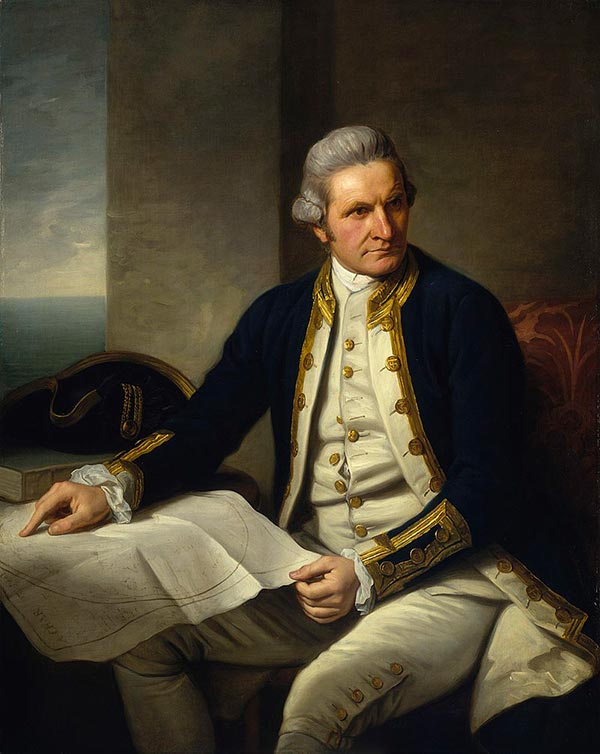
He was headed next to Hawaii where he had many adventures, but was killed just three and a half months later in a squabble with natives over a stolen boat. He was stabbed when he tried to kidnap the King of Hawaii to get his boat back.
-
October 29, 1965 & October 2, 1969
Two of three Alaskan nuclear bombs exploded by the US Military took place in October.
All three happened under Amchitka, an island in the Aleutians. The first, codenamed "Long Shot", happened on October 29, 1965 and was used to learn about the seismic signatures of underground explosions. The second on October 2, 1969 was codenamed "Milrow" and helped the military map the geology of the island. We'll talk about the third next month!
-
NOVEMBER
-
November 2, 1976
The people of Alaska authorized the Permanent Fund
which is most famous for sending annual checks to every resident of the state. These checks vary but are usually a little more or less than $1000. The source of the money is largely from the mineral leases, royalties, and investment income from the capital of the fund.
-
November 6, 1971
The US Military exploded their third and final nuclear test in Alaska.
Codenamed "Cannikin", this 5 megaton bomb was the largest ever tested underground. The explosion caused the ground to rise over 20 feet and the aftermath created a new lake on Amchitka Island in the Aleutians! Small earthquakes followed over the next several weeks.
-
November 21, 1979
Over 4000 pounds of postal mail was lost
when a mail truck was washed overboard from a cargo ship.
-
November 22, 1942
The Alcan Highway was officially opened.
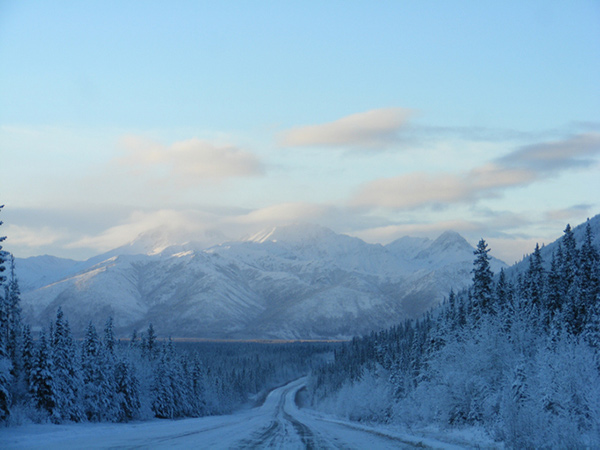
The 1500-mile roadway connected Dawson Creek BC (home of the Klondike Gold Rush) with Fairbanks and brought a new sense of security to the people of Alaska during World War II.
-
November 23, 1920
Anchorage Alaska, now Alaska's largest city with over 40% of the state's population, was incorporated.

It had only been about 6 years since the location was first used as a railroad construction port. The rapidly growing population had voted 328 to 100 in favor of incorporation.
-
DECEMBER
-
December 10, 1951
The international airport in Anchorage opened for business.
Although the actual opening ceremony happened two years later.
-
December 16, 1929
Construction began on the Alaska Territory Capitol building.

Before that the first capitol of Russian America was in Kodiak starting in 1792. It was moved to Sitka in 1808 then finally moved again to its current location in Juneau in 1900. The building was authorized by Congress in 1911 but it was delayed another 17 years by World War I and other difficulties.
-
December 18, 1971
The Alaska Native Claims Settlement Act
returned 44 million acres of Alaskan land and paid $963 million to native-owned corporations to conclude many long-standing legal claims and open the way for oil extraction in Alaska.
-
December 19, 1741
Explorer Vitus Bering died of scurvy.

Bering, originally Dutch but working for Russia, was one of the two Europeans to first spot Alaska. It was on the voyage back from their discovery that he fell ill and died with a large portion of his crew
-
December 20, 1980
The Alaska National Interest Lands Act
more than doubled the size of the National Wilderness Preservation System by adding 55 million acres of protected lands.
-
New Year's Eve, 1917
Alaska Prohibition goes into effect years before the rest of the U.S.
All saloons close at midnight on New Year's Eve, 1917.
-
December 14, 1989
The 9000 foot peak of Mount Redoubt erupted about 100 miles from Anchorage.
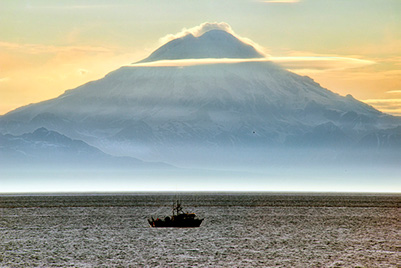
A 747 suffered a frightening experience when it flew through the ash cloud and stalled all four of its engines. It landed safely though the incident caused $80,000,000 damage to the airplane.
-
December 30, 1960
The Alaska Sled Dog and Racing Association
had to cancel their first race of the season due to lack of snow!